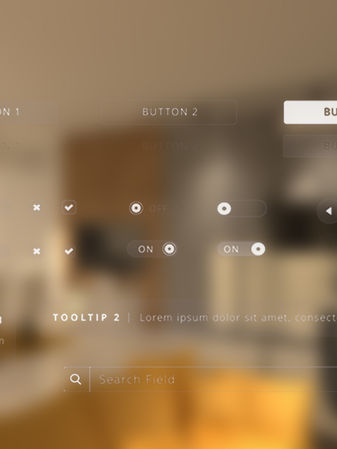
Ogmented
A Creator's Tool

A brief about Ogmented
Ogmented is a VR-based platform built to collaboratively design, visualize, render hi-fi Interiors/Architecture associated work. It comes with next-gen features: VR meetings (with voice chat), Speech recognition, Instant render, Real-Time measurement tools (supported on limited devices), Rapid rendering capabilities(Post design completion), and generate a 360 image/video or even as a VR experience (a client app). Ogmented uses the open-source 3d tool Blender as the backend for all its 3d content creation in VR.
Features of Ogmented
Roles & responsibilities
Solely responsible for product design, prototyping, and development. Embedded unique features like Speech Recognition systems and Smart Assistants are attributes to offer a complacent experience, individually designed, prototyped, tested thoroughly to instigate user pain points.

Product's Goal
Ascertain the conceived design notion through the simulated experience of Virtual Reality helps manifest the ideal interior design through quick rendering. It Appreciates better decision-making for the clients over a meek visual projection, an independent and collaborative resolution for the designers.
Research
Based on the competitive analysis, most design tools are available in the market don't support VR designing, Collaborative design, and visualization.
Our expert panel of SMEs, compromised of Architects and Interior-designers provided us inputs on design standards, and site weather reports could be beneficial while designing/creating a climate-based interior plan.
Understanding User Needs
Based on the user research, the idea of collaboration works in designing an environment and Instant Render was exciting. The Primary hardship experienced by the users was translating the object / designing the whole environment using a pair of controllers. Furthermore, the majority of the sole designers were expecting a Smart Assistant to aid them with design and color ideas throughout the designing process.
Personas
Persona 1 - Architect
An architect is the project owner, can independently design, can add/remove designers and viewers. The Architect has the authority to grant and limit the users' (designer and viewer) permission: usage of Instant Render, setting up the wake word for speech recognition, etc.
Persona 2 - Designer
The designer will have access only to design the interior based on inputs provided and create a VR walkthrough of the interior. By default, the designers will not have access to Instant render and user management (On-demand can be provided by the Architect).
Persona 3 - Viewer
The viewer can experience the walkthrough and interact with fellow designers and architects. The viewer is typically a business client who notices the progress in real-time. The viewer can attach a voice note on the top of any specific design for any improvements/changes to the original design.
User Pain points
01
Complicated usability for collaboration in designing
02
Challenging to maneuver VR devices to design an interior
03
Tedious workflow for rendering high-resolution images
04
Disruption in client feedback interaction
Analysis & Inference
Users preferred to have a collaborative environment for designing an interior with Instant Render capabilities. Translating/Nudging the objects can be an intricate process while using controllers. Users favoured the idea of buying their self-designed furniture to avoid the annoyance of finding the exact match for it in the market.
Methodology of Implementation
Instant Render
After multiple iterations, the Open-Source Blender was adopted as the backend for Instant Renders. It has python as a scripting language attributed to quick automation with an API call.
Collaborative Design
Though numerous complex solutions are available to create a collaborative environment in Unity, we decided to have a straightforward backend to create a collaborative space.
Speech Recognition
Microsoft LUIS helps add speech recognition abilities. We designed a common conversational language to do a specific task. For example, to change the color of a wall, the user calls Aria (wake word), "Change the color of this wall the system," a color palette pops up to pick the desired color.
Creating VR experience
Access the VR renders in the application. Walk-through mode helps users to visualize the walk-through. Rendering/Light mapping of the VR experience is done in the backend (in Unity) through an Automation script.
Mind Map

Work-In-Progress Images
Working Prototype Video







